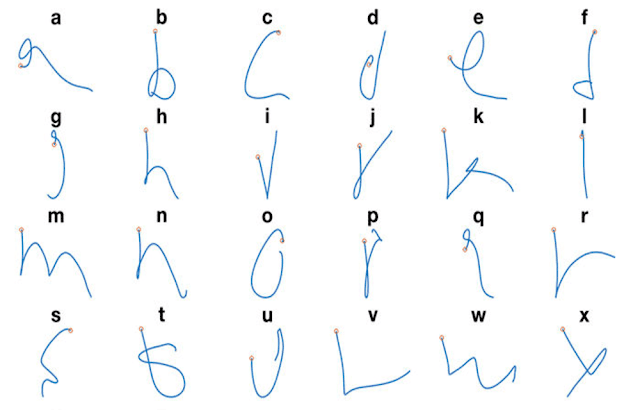This AI System Allows A Paralyzed Person To ‘Handwrite’ Using His Mind
Many times you have come across scenes in sci-fi movies where an individual is controlling things with his brain, he moves the object, attacks on his enemy and sometimes communicates through telepathy.
At the Society for Neuroscience’s annual meeting in Chicago a team of neurologists presented a new study that shows that an AI system can be used to allow paralyzed people to ‘handwrite’ using their minds.
With the help of Artifical Intelligence, the team has built a new tool that could read out the sentences formed by a volunteer paralyzed from the neck down, in double the average speed recorded for existing technologies.
This new system has brought lots of ease to a fully paralyzed person. In old-time electrodes was implanted in a motion involved part of the brain, which helps some patients to select onscreen letters with their brain.
The new AI system is completely based on an individual imagination. As per Neurology, the things we say or write are first running in our mind which come out with the movement of our mouth or hands.
To gain insight into how the motor cortex contributes to handwriting, the team examined the neural activity during the instructed delay period. Recent theories suggest that neural dynamics in the motor cortex might “unroll” the preparatory state into patterns of activity that generate the movement.
The team found that preparatory activity represented upcoming letter features only within a short time. That is, letters that differed only near the end (e.g. m and n) had seemingly identical preparatory representations, which means the motor cortex requires additional inputs during the movement to complete the letter.
However, letters that begin identically but quickly diverge (e.g. l, t, and k, which all begin with a downstroke but then diverge) had separable (but similar) preparatory representations.
During the presentation, the team also presented an experiment, in these new experiments, a volunteer who is paralyzed from the neck down imagined moving his arm to write each letter of the alphabet.
That brain activity helped to train a computer model known as a neural network to interpret the commands, tracing the intended trajectory of his imagined pen tip to create letters.
As writing is an activity that involves movement requires a certain cerebral organization in the primary motor cortex. This ‘preparatory state’ to the act of writing is what the researchers used for their new tool.
Because letters have distinct trajectories, the attempt to write even if only a mental one triggers types of brain activity that are different to be separately recorded via microelectrodes & used to train a neural network.
The network was then incorporated into a brain-computer interface (BCI) so that the brain’s attempts to write could be recognized and translated into text by a machine in real-time.
Researchers report that the patients could complete sentences with 95% at a speed of about 66 characters per minute. But, this could increase significantly with more practice.
Mistakes were mostly confined to letters that look similar, such as ‘g’ and ‘q’, they said, because the preparatory states for those are identical, suggesting that those letters require extra effort in the physical act of writing to be completed.
The researchers expect the speed to increase with more practice. As they refine the technology, they will also use their neural recordings to better understand how the brain plans and orchestrates fine motor movements.
The aim is to ultimately use their research to better understand how the brain interprets fine motor movements.”These preliminary results suggest that a handwriting BCI could be accurate enough to achieve high communication rates,” the researchers said.
“Handwriting is a fine motor skill in which straight and curved pen strokes are strung together in rapid succession. Because handwriting demands fast, richly varying trajectories, it could be a useful tool for studying how the motor cortex generates complex movement patterns,” the researchers wrote.
While the technology is in its very early stages, it is showing great promise. So much so that even Elon Musk has joined the party, promising an intelligence-enhancing revolution that will change the way we interact with the virtual world.






Post a Comment